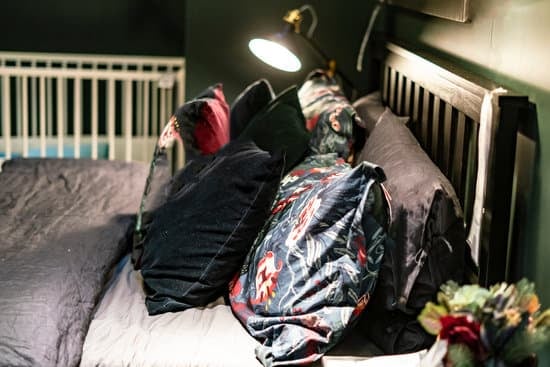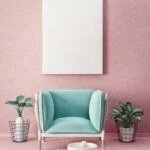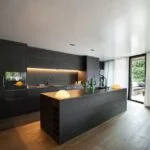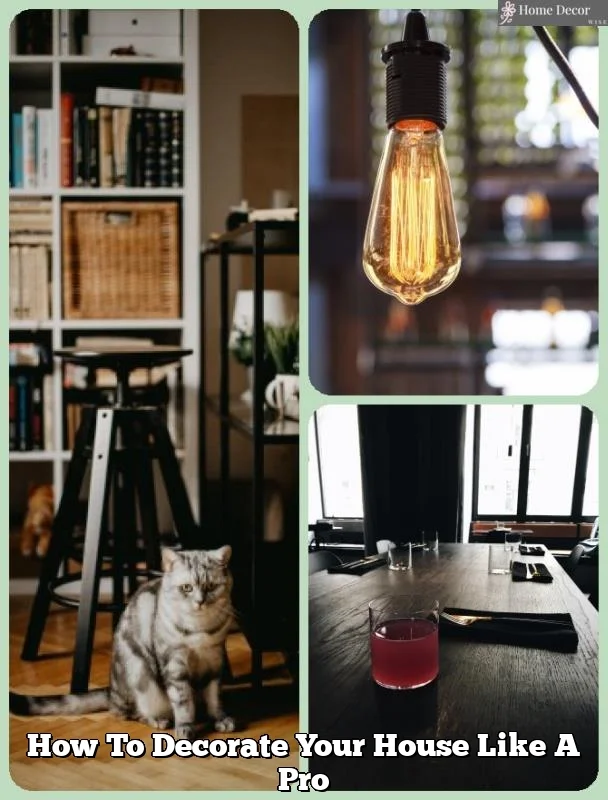Are you wondering how to decorate your 1870s home in a way that embraces its historical charm while adding modern comfort? The Victorian era brought about a unique style of architecture and interior design that is still admired today.
In this article, we will explore the key elements of 1870s home decor, including architectural details, color palettes, and authentic furniture pieces. Whether you’re restoring a historic home or simply inspired by Victorian-era design, these tips will help you create a stylish and inviting space that pays homage to the past.
The 1870s marked a period of ornate architecture and interior design characterized by intricate detailing and grandeur. Understanding the style and architecture of this time can provide valuable insight into decorating your home in a historically accurate manner. From elaborate molding to decorative trim, Victorian homes were renowned for their lavish embellishments that added a touch of opulence to every room.
Researching historical accuracy is essential when it comes to finding authentic decor and furniture pieces for your 1870s home. By delving into the styles, materials, and craftsmanship popular during this era, you can ensure that your decor choices reflect the true essence of Victorian design. Whether scouring antique shops or seeking out reproduction pieces, there are plenty of options available for incorporating authentic elements into your home’s interior.
Researching Historical Accuracy
Decorating a home from the 1870s requires careful attention to historical accuracy, especially when it comes to choosing decor and furniture pieces. By incorporating authentic elements from the Victorian era, you can recreate the charm and elegance of the time period. Here are some tips for finding and selecting genuine decor and furniture pieces for your 1870s home.
Visiting Antique Shops and Estate Sales
One of the best ways to find authentic decor and furniture pieces from the 1870s is by visiting antique shops and estate sales. These places often have a wide selection of items from different time periods, allowing you to find pieces that truly capture the essence of Victorian-era style. Look for items such as ornate side tables, intricately carved chairs, and decorative mirrors to add a touch of authenticity to your home.
Consulting Historical References
To ensure historical accuracy in your decor choices, it’s beneficial to consult historical references such as books, photographs, and online resources that showcase interior design from the 1870s. By studying these references, you can gain a better understanding of the style and aesthetic preferences of the time period, which will help you make informed decisions when selecting decor and furniture pieces for your home.
Replicating Period-Appropriate Fabrics
Another important aspect of historical accuracy in decorating an 1870s home is selecting fabrics that are true to the Victorian era. Look for richly patterned textiles such as brocade, damask, and velvet to upholster furniture pieces or create draperies. Incorporating these period-appropriate fabrics will enhance the authenticity of your decor while adding a luxurious touch to your home.
By following these tips and putting in some effort into researching historical accuracy, you can successfully incorporate authentic decor and furniture pieces into your 1870s home, bringing its timeless charm back to life while honoring its heritage.
Choosing the Right Color Palette
The color palette of a 1870s home plays a significant role in recreating the Victorian-era ambiance. To achieve historical accuracy and authenticity, it’s essential to understand the colors commonly used during this period and how to incorporate them into your home decor. Here are some tips for choosing the right color palette for your 1870s home:
1. Research Victorian-Era Colors: Before painting or decorating your home, take the time to research the colors that were popular during the 1870s. This may include deep, rich tones such as hunter green, deep red, navy blue, and mustard yellow. These colors were often used in combination with ornate wallpaper patterns and intricate designs.
2. Incorporate Jewel Tones: The use of jewel tones was prevalent in Victorian-era decor. Consider incorporating rich, opulent hues such as emerald green, sapphire blue, ruby red, and amethyst purple into your color palette. These vibrant colors can be used for walls, upholstery, draperies, and accent pieces to add a touch of luxury to your 1870s home.
3. Use Neutrals as Base Colors: While bold and vibrant colors play a significant role in Victorian-era decor, neutrals also have their place. Consider using shades of cream, taupe, beige, or pale gray as base colors for walls and larger furniture pieces. These neutral tones can help balance out the richness of jewel-toned accents and create a sense of harmony within the space.
By understanding the color trends of the Victorian era and incorporating them strategically into your 1870s home decor, you can bring historical charm and authenticity to your living space while creating a visually stunning environment that reflects the elegance of this bygone era.
Embracing Ornate Details
When it comes to decorating an 1870s home, one of the key elements to embrace is the ornate details that were characteristic of Victorian-era decor. This includes intricate molding, trim, and medallions that add a sense of grandeur and elegance to the space. Incorporating these elements into your home decor can help to authentically capture the essence of the time period while creating a visually stunning interior.
Historical Reference and Inspiration
Before embarking on the task of incorporating intricate molding, trim, and medallions into your home decor, it’s important to research and understand the historical context of these elements. Look for inspiration from historical architecture and design books, as well as visiting museums or historical homes from the 1870s era. Understanding the different styles and motifs popular during this period will guide you in choosing the right ornate details for your home.
Choosing Ornate Details
When it comes to selecting molding, trim, and medallions for your 1870s home decor, opt for designs that reflect the elaborate craftsmanship of the Victorian era. Intricate floral motifs, scrollwork, and detailed patterns are often seen in Victorian architecture and can be replicated in molding and trim. When selecting medallions for ceilings or walls, look for pieces with intricate detailing that can serve as a focal point in the room.
Professional Restoration and Reproduction
If your 1870s home has original ornate details that have been damaged over time, consider hiring professionals who specialize in restoration or reproduction of historical architectural elements. These experts can help repair or recreate original moldings, trim, and medallions to maintain the authenticity of your home’s historical charm. Working with professionals ensures that these ornate details are accurately incorporated into your home decor while preserving their integrity.
Embracing ornate details in your 1870s home decor is a beautiful way to pay homage to the rich history and craftsmanship of the Victorian era. By carefully selecting and incorporating intricate molding, trim, and medallions, you can create a space that exudes timeless elegance while staying true to the historical authenticity of your home’s architecture.
Balancing Modern and Antique
When decorating an 1870s home, it’s essential to strike a balance between maintaining the historical charm of the era and incorporating modern elements for comfort and functionality. Mixing contemporary elements with 1870s decor can be a challenging yet rewarding task. By carefully selecting pieces that complement each other, you can create a unique and visually interesting living space that seamlessly blends the old with the new.
One way to achieve this balance is by incorporating modern furniture into your 1870s home. Look for pieces with clean lines and minimalistic designs that will provide a striking contrast with the ornate details of Victorian-era decor. Additionally, consider integrating modern technology discreetly into your home, such as hiding speakers or smart home devices within vintage furniture or fixtures.
Another approach to balancing modern and antique in your 1870s home is through art and accessories. Consider displaying contemporary artwork alongside vintage pieces to create an eclectic yet harmonious aesthetic. You can also mix and match antique accessories with modern accents such as sleek lamps or geometric sculptures to add interest and depth to your interior design.
In addition, when mixing contemporary elements with 1870s decor, it’s important to pay attention to scale and proportion. Ensure that the size and shape of modern furniture and accessories complement the grandeur of Victorian-era architecture. By doing so, you can create a cohesive look that celebrates both the historical charm of your home and the conveniences of modern living.
| Mixing Contemporary Elements | With 1870s Decor |
|---|---|
| Incorporate modern furniture | Look for sleek lines |
| Art & Accessories | Mix contemporary artwork with vintage pieces |
| Scale & Proportion | Ensure size complements Victorian-era architecture |
Creating a Cozy Atmosphere
Incorporating heavy, luxurious fabrics such as velvet, brocade, and damask can instantly elevate the ambiance of a room in an 1870s home. Look for curtains and draperies with intricate patterns or ornate details that reflect the Victorian-era design sensibility. Additionally, consider reupholstering antique furniture pieces with rich, opulent fabrics to bring a sense of grandeur to your living spaces.
When selecting textiles for your 1870s home decor, it’s crucial to take into account the color palette of the era. Deep jewel tones like emerald green, sapphire blue, and ruby red were commonly used in Victorian interior design. Consider incorporating these hues into your decorative textiles to evoke a sense of historical authenticity while creating a cozy atmosphere in your home.
Finally; balacing modern furnishing items with era-suitable elements can be assured by introducing some hand-made or classical-looking textile pieces which will also enhance nostalgic flair; Definitely worth trying different textures or patterns as well.
| Elements | Recommendations |
|---|---|
| Fabric Selection | Incorporate heavy luxurious fabrics such as velvet or brocade. |
| Color Palette | Consider deep jewel tones like emerald green and sapphire blue. |
| Mixing Modern Elements | Balancing modern furniture with vintage textiles for a balanced look. |
Showcasing Vintage Collections
As you embrace the beauty and charm of 19th-century home décor, showcasing vintage collections becomes an essential aspect of decorating your 1870s home. Whether it’s displaying antique furniture, art, or unique trinkets, incorporating these historical pieces into your interior design can add character and a sense of nostalgia to your space.
To effectively showcase your vintage collections, consider the following tips:
- Display antique artwork on the walls: Utilize the walls in your home to showcase 19th-century paintings, portraits, and tapestries. Frame these pieces in ornate Victorian-style frames to enhance their historical significance.
- Highlight decorative antiques: Incorporate decorative antiques such as porcelain vases, figurines, or intricate clocks as focal points in your living spaces. Place them on mantels, shelves, or coffee tables to draw attention to their beauty.
- Create a curated gallery: Arrange vintage photographs, postcards, and other ephemera into a curated gallery wall. This can serve as a visual timeline of the time period and add interest to your home decor.
- Utilize display cabinets: Invest in antique display cabinets or vintage curio cabinets to showcase delicate collectibles such as china sets, glassware, or small sculptures. These cabinets not only protect your items but also make them a centerpiece in any room.
Incorporating 19th-century art and antiques into your home allows you to connect with the past while adding a unique touch to your décor. By following these tips on how to decorate my 1870s home using vintage collections, you can create an interior that reflects both historical charm and personal style.
Garden and Outdoor Spaces
When it comes to decorating your 1870s home, don’t forget about the importance of incorporating Victorian garden design into your home’s exterior. The outdoor spaces of a Victorian-era home were just as important as the interior, and they often reflected the ornate and intricate style of the time period. To create an authentic and cohesive look for your 1870s home, it’s essential to pay attention to your garden and outdoor spaces.
One way to incorporate Victorian garden design into your home’s exterior is by paying attention to landscaping and plant choices. Victorian gardens were known for their lush greenery, colorful flowers, and carefully manicured lawns. Consider planting classic Victorian garden plants such as roses, peonies, hydrangeas, and lavender. Additionally, incorporating winding pathways, ornate iron gates or fences, and decorative trellises can also enhance the authentic Victorian look of your outdoor space.
In addition to plants and landscaping, you can also incorporate Victorian design elements such as gazebos, pergolas, or ornate benches into your outdoor spaces. These structures were popular in Victorian-era gardens and can add a touch of historical charm to your home’s exterior.
Don’t forget about lighting as well – consider adding vintage-style lanterns or gas lamps to illuminate your garden at night. By paying attention to these details, you can create a cohesive look that seamlessly blends your 1870s home with its outdoor spaces in true Victorian fashion.
Overall, when decorating your 1870s home with a focus on the exterior and garden spaces, it’s important to research historical accuracy just like you would with the interior decor. By finding inspiration from authentic Victorian gardens and incorporating key design elements into your outdoor spaces, you can create a truly cohesive and historically accurate look for your 1870s home.
Budget-Friendly Tips
Decorating a historical home from the 1870s can be a fulfilling project, but it can also be expensive. However, there are several budget-friendly tips to decorate your 1870s home without sacrificing style. One way to save money when decorating your 1870s home is to prioritize the rooms that guests will see most often. By focusing on these areas, you can allocate your budget more effectively and make a big impact with limited resources.
Another cost-effective way to decorate your 1870s home is by incorporating DIY projects. You can create period-appropriate decor and furniture pieces using online tutorials and thrifted materials. Additionally, consider exploring flea markets, estate sales, and antiques stores for authentic pieces that may be more affordable than purchasing new items from high-end retailers.
Additionally, repurposing and reupholstering existing furniture can help you save money while still achieving an authentic look in your 1870s home. By updating the upholstery or refinishing wood furniture, you can breathe new life into older pieces and integrate them seamlessly into your decor scheme. With some creativity and resourcefulness, decorating a charming 1870s home on a budget is certainly achievable.
Conclusion
In conclusion, decorating a 1870s home is a unique and rewarding experience that allows homeowners to blend historical charm with modern comfort. From understanding the style and architecture of the era to finding authentic decor and furniture pieces, there are many ways to create a stunning aesthetic that pays homage to the Victorian era while meeting the needs of contemporary living.
By embracing ornate details, choosing the right color palette, and balancing modern and antique elements, homeowners can achieve a beautiful balance that captures the essence of the 1870s while ensuring their space feels inviting and comfortable.
One of the key aspects of decorating a 1870s home is creating a cozy atmosphere through textiles, draperies, and upholstery. Incorporating these elements can enhance the warmth and comfort of the space while also adding visual interest.
Additionally, showcasing vintage collections such as 19th-century art and antiques can further bring character and charm to the home’s interior. Furthermore, incorporating Victorian garden design into the home’s exterior can complement the overall aesthetic and create a cohesive look that extends beyond the interior walls.
Lastly, it’s important for homeowners to know that decorating their 1870s home does not have to be expensive. There are budget-friendly tips for finding authentic decor pieces, repurposing existing furniture, and DIY projects that can add character without breaking the bank. By following these tips while staying true to historical accuracy, homeowners can achieve a perfect blend of timeless elegance and modern comfort in their 1870s home decor.
Frequently Asked Questions
How Do You Beautify an Old House?
Beautifying an old house involves preserving its historical charm while updating its elements for modern living. This can be achieved through restoring original architectural details, using period-appropriate colors and materials, and incorporating vintage or antique furnishings.
What Is Victorian Decor?
Victorian decor refers to the interior design style popular during the reign of Queen Victoria in the 19th century. It is characterized by ornate furniture, rich color palettes, elaborate patterns, and a mix of influences from Gothic, Renaissance, and Rococo styles.
How Can I Decorate My House Like Old Money?
To decorate your house like “old money,” focus on quality over quantity when selecting furnishings and decor. Opt for classic, timeless pieces with attention to detail and craftsmanship. Incorporate luxurious fabrics, elegant accessories, and subtle opulence throughout the space for a sophisticated look.

I’m thrilled to be your companion on this exciting journey through the world of home decor and design. With a passion for turning houses into homes and a keen eye for the finer details, I’m here to help you transform your living spaces into beautiful, functional, and meaningful havens.





